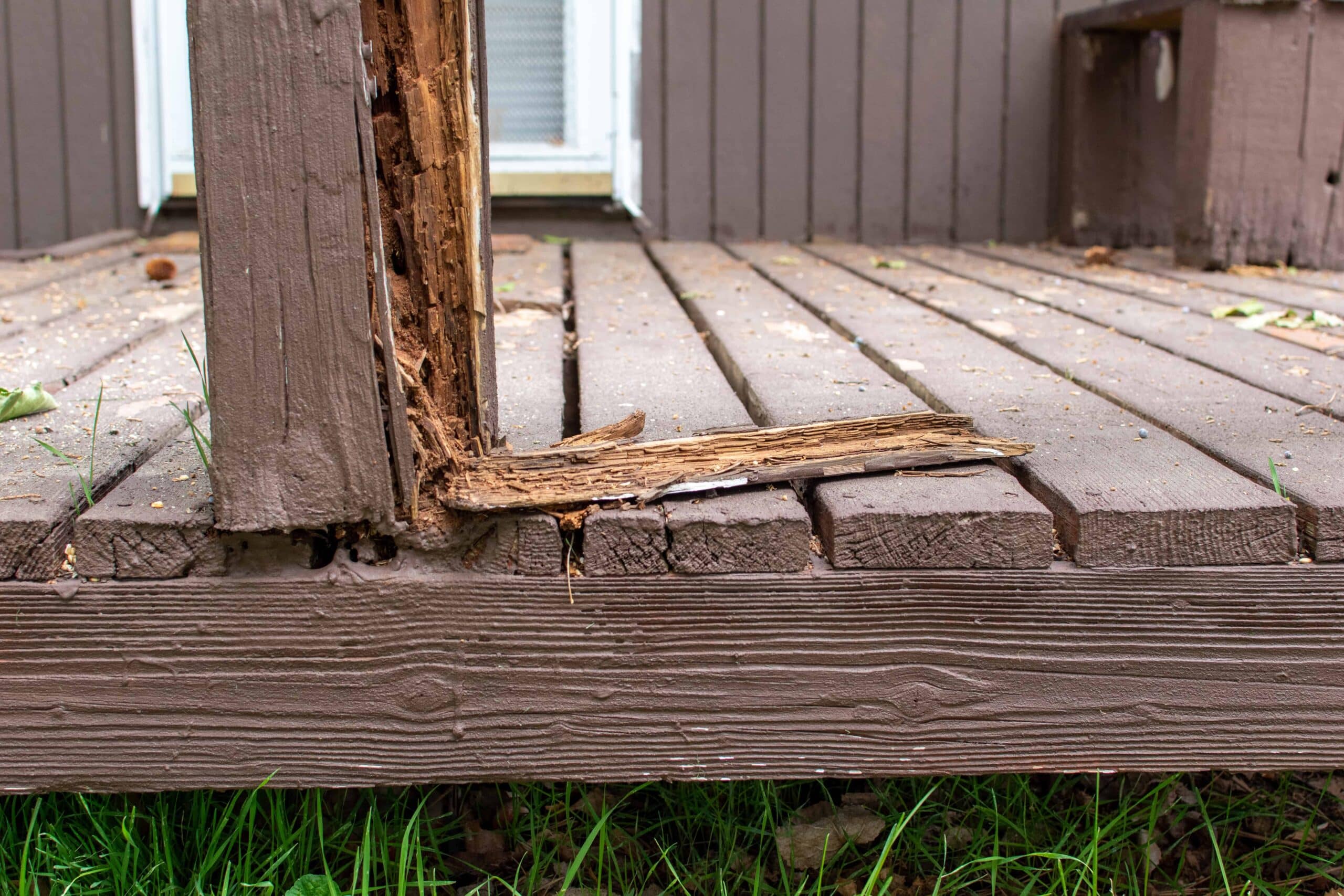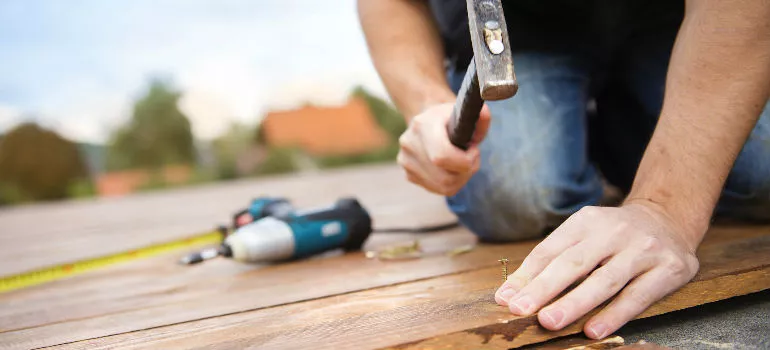Deck Repair Quality: Your Relied On Partner for a Safe and Spectacular Deck
Revive Your Deck's Charm and Functionality: Crucial Tips for Successful Deck Fixing
Deck repair is a vital part of preserving the elegance and functionality of your outside room. Over time, decks can end up being used, harmed, and lose their charm. With the best ideas and strategies, you can revitalize your deck and change it into a spectacular and practical location when again. From examining the level of the damages to cleaning, repairing, and using a fresh layer of repaint or stain, there are several vital actions to take into consideration in this process. If you're looking to rejuvenate your deck and create a space that you can enjoy for years to come, maintain reviewing to find the vital suggestions for successful deck fixing.
Evaluating the Damages

Cleaning and Preparing the Surface Area

To begin, sweep the deck completely to get rid of loosened particles such as leaves, twigs, and dirt. Utilize a rigid brush or broom to scrub away any type of persistent dirt or spots. For tougher spots, you might require to make use of a deck cleaner or a light cleaning agent mixed with water. Deck Repair. Apply the cleaner or detergent to the deck surface and scrub with a brush or a power washer, if offered, to eliminate the spots.
After cleansing, wash the deck thoroughly with tidy water to get rid of any kind of deposit from the cleansing option. Enable the deck to dry completely before continuing with any kind of repair services. This is very important as dampness caught in the wood can lead to future problems such as bending, decomposing, or mold growth.
Once the deck is dry and tidy, evaluate the surface for any loosened or broken boards. Replace any boards that are cracked, splintered, or deteriorated. Additionally, check for any kind of loosened or protruding screws and nails and tighten up or replace them as necessary.
Fixing or Replacing Broken Boards
Changing or repairing harmed boards is a crucial action in restoring the architectural stability and visual charm of your deck. In time, direct exposure to extreme weather, wetness, and normal usage can create boards to warp, fracture, or become loosened. Ignoring these problems can lead to more damage and endanger the safety of your deck.
To start the repair work procedure, thoroughly evaluate the deck boards for any kind of indications of damage. Try to find splintering, rotting, or any type of various other visible flaws. For minor problems such as tiny cracks or loosened nails, you might be able to just repair the board. This can be done by fining sand down the harmed area, applying wood filler, and after that sanding it smooth prior to refinishing the board (Deck Repair).
However, if the damage is a lot more extreme, it might be required to replace the entire board. To do this, begin by getting rid of the harmed board using a pry bar or a screwdriver. Step the measurements of the board precisely to guarantee an appropriate suitable for the replacement. Cut the new board to size and protect it in position using deck screws or nails.
Bear in mind to pick boards that match the product, shade, and appearance of the existing deck to keep a natural appearance. Routinely examining and quickly replacing or repairing harmed boards will certainly aid extend the life expectancy of your deck and ensure its performance and charm for years to come.
Using a Fresh Layer of Spot or Paint
When renewing the look of your deck, a critical action is applying a fresh coat of tarnish or repaint. Not just does this offer your deck a freshened and dynamic look, yet it likewise offers protection versus the aspects, avoiding rot, decay, and fading created by UV rays. Prior to applying the tarnish or repaint, it is crucial to correctly prepare the surface by cleansing it thoroughly and permitting it to completely dry completely. This will certainly make sure better attachment and durability of the finish.
When selecting in between paint and discolor, think about the pros and cons of each. Spot enables the all-natural grain and appearance of the wood to show through, improving the appeal these details of the deck.
Prior to using the paint or stain, examine it on a small unnoticeable area to ensure it matches your preferred shade and attains the wanted appearance - Deck Repair. Use the stain or paint evenly using a roller, sprayer, or brush , adhering to find more info the supplier's guidelines. Make sure to use numerous slim layers instead than one thick coat to prevent drips and make sure appropriate protection
After applying the fresh coat of repaint or tarnish, enable adequate drying time prior to utilizing the deck. This will avoid any type of damage or smudging of the finish. Normal upkeep, such as cleaning and reapplying the stain or repaint every couple of years, will certainly assist extend the life of your deck and keep it looking its best.
Enhancing Safety And Security Attributes and Completing Touches
Safety and security ought to always be a leading concern when it comes to deck repair work. Furthermore, including nonslip strips or coatings to the deck surface can considerably lower the risk of slips and drops, specifically when the deck becomes wet or slippery.
One preferred selection is adding lighting to the deck location. Not only does this provide extra seats area, but it additionally includes a functional and fashionable aspect to the deck. Consider including ornamental elements such as potted plants, exterior carpets, or decorative accents to individualize the deck and produce a welcoming ambience.
Final Thought
To conclude, efficiently repairing and revitalizing your deck needs assessing the damages, cleaning and preparing the surface area, repairing or changing damaged boards, using a fresh coat of repaint or discolor, and boosting security attributes. By complying with these important pointers, you can restore your deck's elegance and functionality, guaranteeing it remains a secure and pleasurable exterior space for many years to come.
Deck repair service is an essential component of maintaining the beauty and performance of your exterior room. If you're looking to renew your deck and develop a room that you can delight in for years to come, maintain reading to find the crucial suggestions for effective deck repair.
Changing or repairing damaged boards is a necessary step in restoring the architectural honesty and visual appeal of your deck.To begin the repair service procedure, thoroughly check the deck boards for any kind of signs of damage. Furthermore, internet including nonslip strips or layers to the deck surface area can greatly decrease the danger of slides and drops, specifically when the deck becomes slippery or wet.